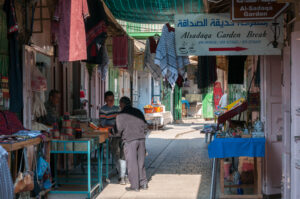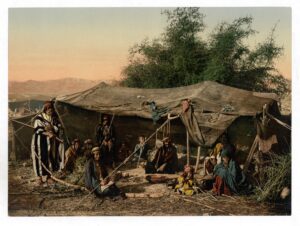Birthplace of Jesus: Church of the Nativity and the Pilgrimage Route, Bethlehem
Church History
The registered site is located 10 km south of Jerusalem, precisely on the historic grounds recognized by Christian tradition as the birthplace of Jesus since the 2nd century. It holds immense religious significance and is home to a remarkable complex of structures.
The earliest church was constructed at this site in AD 339, and despite a devastating fire in the 6th century, the subsequent edifice preserves exquisite floor mosaics from its predecessor. This testament to architectural resilience showcases the enduring beauty of the original building.
In addition to the iconic church, the site encompasses a fascinating array of religious institutions, including Latin, Greek Orthodox, Franciscan, and Armenian convents and churches. The presence of bell towers, terraced gardens, and a designated pilgrimage route further enhances the spiritual atmosphere and offers visitors a holistic experience.
Come and explore this sacred site, walk in the footsteps of ancient traditions, and witness the profound cultural and religious heritage it embodies. Discover the captivating history and artistry that have captivated pilgrims and travelers for centuries.
Did you know ?
The Pilgrimage Route, Bethlehem
For over 1700 years, Bethlehem and the renowned Church of the Nativity have held a significant place as a cherished pilgrimage destination. The historical journey from Jerusalem to the Church, known as the Pilgrimage Route, has witnessed the footsteps of countless pilgrims throughout different eras.
The eastern end of this sacred route traces the path from the traditional entrance of Bethlehem, near King David’s Wells, to the revered Church of the Nativity. It meanders along the renowned Star Street, passing through the Damascus Gate, or Qos Al-Zarara, an esteemed historical gate of the town, until reaching the iconic Manger Square.
Every year, during Christmas ceremonies, the Route is joyously celebrated as the same path that Joseph and Mary traversed during their trip to Bethlehem. It holds immense significance and is ceremonially followed by the Patriarchs of the three churches during their respective Christmases and official visits to Bethlehem.
Join the rich tapestry of history and spirituality as you embark on this sacred journey, retracing the steps of ancient traditions and immersing yourself in the profound heritage of Bethlehem and the Church of the Nativity. Experience the annual Christmas festivities and witness the enduring legacy of faith that has captivated pilgrims for centuries.
Nestled at the revered location regarded as the Birthplace of Jesus Christ for over 2000 years, the Church of the Nativity stands as an esteemed Christian site of immense sanctity. Its significance has been cherished since the 4th century AD and continues to resonate with believers to this day.
The preservation of the sacred site is entrusted to the three churches that occupy it, upholding its spiritual aura. The original construction of the church above the grotto in 339 AD, and its subsequent reconstruction in 533 AD, serve as enduring testaments to the belief spanning seventeen centuries that this very grotto witnessed the birth of Jesus Christ.
Since the 4th century AD, the association with the birthplace of Jesus has been meticulously documented, with subsequent structures erected to amplify its religious importance. While the majority of the existing church dates back to the 6th century AD, remnants of the 4th-century floor, walls, and columns still endure. Notably, the church showcases icon paintings on its columns that bear the unmistakable influence of the 12th-century additions, reflecting the fervent pilgrimage activity during the Crusades.
Embark on a sacred pilgrimage to the hallowed Church of the Nativity, where history, faith, and tradition converge. Explore its ancient halls, marvel at the architectural wonders that have withstood the test of time, and immerse yourself in the profound spiritual atmosphere that has captivated pilgrims for centuries.




